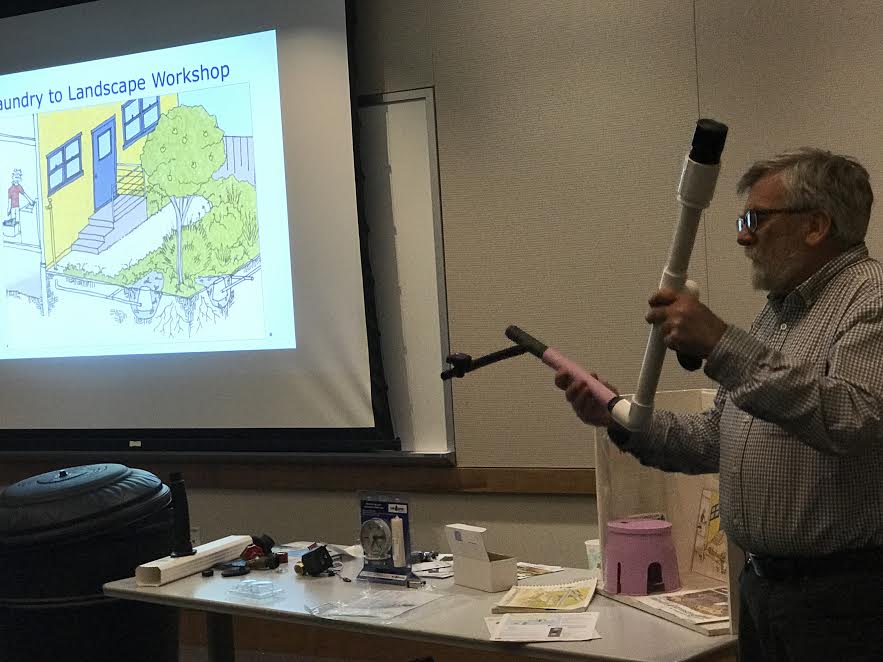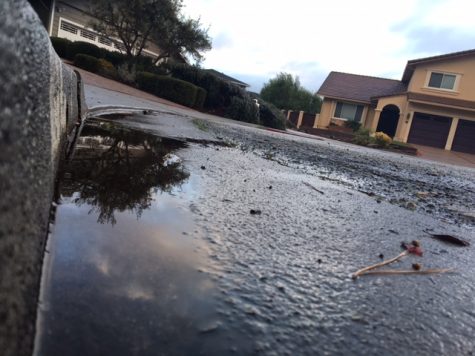The shriveling grass and dying trees in California backyards as a result of ongoing drought in California has given environmental communities the urge to teach the public how to preserve water.
On Wednesday, March 1 at the Millbrae Library, members of the Bay Area Stormwater Management Agencies Association (BASMAA) came together to present environmentally friendly methods of harvesting rainwater that can be used as tap water and for land irrigation. These methods include storage tanks, rain barrels, gutters, downspouts, and leaf screens.
All of these techniques are feasible to the widespread need of water in California and can help create a positive impact on the environment.
According to a 2014 study by the California Department of Water Resources, an agency responsible for California’s management and regulation of water usage, groundwater levels are decreasing across major parts of the state and have dropped to all-time lows in most areas of the state, especially the northern portion of the San Francisco Bay hydrologic region, the Southern San Joaquin Valley, and the South Lahontan and South Coast hydrologic regions.
By making the decision to store rainwater, it can become a daily routine that benefits all.
“Storing rainwater is not a complex thing to do, it’s the right thing to do. It becomes a habit. California has a very strange climate and it could possibly go 150 days without a single drop of rain at any time. We need to prepare ourselves. Rainwater is also chlorine free unlike the municipal water in our sewers that pose a threat to the life of marine organisms,” said Tom Bressan, president of The Urban Farmer Store and a member of the BASMAA.
Not only does storing rainwater conserve water and protect the environment, but it also has its advantages economically.
“Rainwater systems come at a low cost and local governments thrive to subsidize equipment for buyers who care about their environments,” said Bressan.
As the supply of water becomes scarcer and agencies look for a way to make their revenue, the prices of water bills skyrocket. However, with rainwater storing, neighborhoods can coalesce and prevent icreasing bill prices.
“It will lower your monthly bill because you won’t need to rely on water grids. If this is done by a household and neighbors, a water grid can be less relied upon throughout the whole neighborhood. Since there is less water to process for the energy industries, a path is also paved for cheaper energy rates and solutions throughout households,” said Kirsten Andrews-Schwind, the outreach manager at Peninsula Clean Energy and a member of the BASMAA.
The attendees of the presentation by the BASMAA were interested in perceiving methods to learn how to conserve their water to help with the drought and some were frequently asking questions about how they could apply these methods to their homes.
Millbrae resident Thomas Ishani said, “I am concerned about my water bills and this is something I want to do right away. I want to make sure all my water appliances use this storing system, even my swimming pool if possible. I’m going to start looking into rainwater barrels really soon.”
The BASMAA plans to start educating high school and city college students in the Bay Area how to be more cautious of their environment and establish a deeper understanding of the outcomes that storing rainwater can bring.
“It may seem like a lot of work but it’s really a simple installation. If more people know about it while they’re at a younger age, more action can be taken when they grow older,” said Bressman.
Operating since 1990, the BASMAA has been working on their mission to prevail regional consistency and efficient use of public resources. They strongly stress the importance of sharing information and working together. It has grown to focus on regional challenges and opportunities to improve the use of water in the Bay Area.










